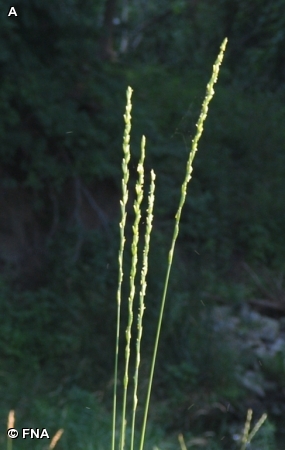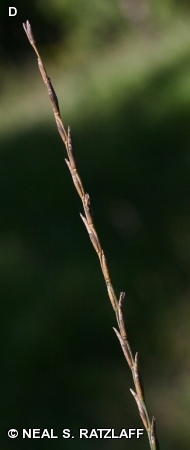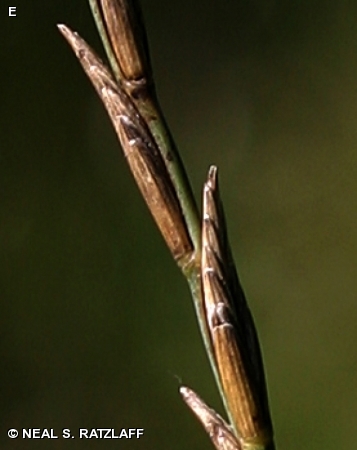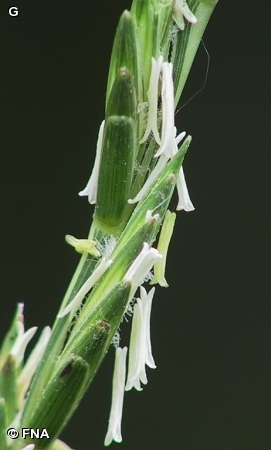
This introduced, nonrhizomatous perennial has flowering stems from 3 1/2 – 6 1/2 feet tall. Narrow leaves up to 24 inches long have rolled up edges and 6-8 prominent ridges on the upper side (C). A white, waxy substance on the surface often gives the leaves a distinct bluish coloration (B). The auricles are prominent. The flower cluster is an open spike up to 18 inches long with little or no overlapping of individual spikelets (D). Each spikelet has 5-11 florets with round to pointed tips and blunt-tipped glumes at its base (E). In flower this plant has rather prominent white anthers (F).
Moist, especially alkaline soils, waste ground, roadsides. Tall Wheatgrass is uncommon and planted on Childs Hollow Dam where it was in the grass seed mix used to cover the dam surface. Flowering occurs from July to September.
Spikes of Quackgrass (Elymus repens) and Western Wheatgrass (Elymus smithii) have densely overlapping spikelets, and their glumes have pointed tips. Quackgrass leaves are not prominently ridged.
Tall Wheatgrass is an important source of genes for wheat breeders, especially for stem and leaf rust resistance.
The content of NatureSearch is provided by dedicated volunteer Naturalists of Fontenelle Forest who strive to provide the most accurate information available. Contributors of the images retain their copyrights. The point of contact for this page is: Neal Ratzlaff.





